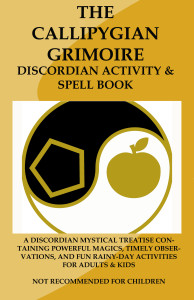The next time you fill up the gas tank, make sure to take a look at the pump handle before you grab it. Terrorists are placing syringes filled with biological agents in gas pump handles, so if you’re not careful, buying gas can kill you. It happened to my cousin’s hairdresser’s son in Peoria last week.
Or not. The above is an example of an urban legend, also known as a “friend of a friend” (FOAF) tale, and is totally false. While urban legends are considered a subset of folklore, they differ from traditional folk tales in that they are usually presented as being absolutely true. The events of most urban legends are said to have happened to (or been confirmed by) someone just outside the storyteller’s circle of acquaintances—a person that the teller doesn’t know personally, but is only one or two degrees of separation from.
Like standard “tall tales,” urban legends change over time, though usually at a much faster pace than traditional folk tales. Most of these alterations localize the story, adding specific landmarks, local celebrities, and regional flavor. For example, the tale of a disgruntled employee at Hardee’s who spits in customer’s milkshakes will change its location to a Carl’s Jr. as it moves westward across the U.S.
FOAF tales can also change to reflect current values, fears, and trends. The opening example, for example, is a variation on a tale told in the 1980s. In the original version, the needles (usually found in phone booth return slots) were said to contain HIV positive blood. According to some versions of the tale, the needles were placed by gay AIDS sufferers who hoped that spreading disease among the straight community would result in more research into a cure. As the general public gained a better understanding of the AIDS epidemic, the legend changed to reflect our newest boogeyman, the (probably Islamic) terrorist. The movement of the needles from phone booths to gas pumps reflects not only the modern prevalence of cell phones, but the role of oil in U.S. relations with the Islamic world.
Though most urban legends are entirely fictional, some are based on actual events. The “contaminated treats” story we hear every Halloween, for example, has some basis in reality. According to Nicholas Rogers in his book Halloween: From Pagan Ritual to Party Night, five-year-old Kevin Totson died in 1970 after supposedly eating heroin-laced candy. Four years later another child, eight-year-old Timothy O’Bryan fell victim to Pixie Stix containing cyanide. In both cases, it is likely that the poisonings were not the result of taking candy from strangers, but accidental or deliberate murders by people the children knew. In the O’Bryan’s case, the boy’s father was convicted of murder. Despite its factual basis, the “razor in the apple” story is considered an urban legend because the actual facts are rarely included and its telling changes as it spreads.
Urban legends are not limited to tales of horror—some are appealing because they are funny, ironic, or just dramatically satisfying. Often, people enjoy retelling urban legends because they allow us to take pleasure in someone else’s misery. One example of this is the “embarrassing incident” story, of which the tale of Richard Gere and his hamster is the most well-known version. Another is the “perfect revenge” story, such as the tale of the divorcee who sells her ex-husband’s beloved sports car for next to nothing. While urban legends often reflect societal attitudes and fears, they ultimately exist because, like all good stores, they are entertaining.



















































